One of the most important aspects that govern cessation of hostilities by an insurgent group is the anvilling of ground rules that would govern ceasefire and the setting up of “Designated Camps” for the insurgent group. While, it has been seen that ground rules for insurgent organisations ceasing hostilities have more or less been carbon copies of the ones that were prepared for NSCN, leading thereby to post-hoc complication, it seems little or no thought has been brought to bear when “Designated Camps” are set up.
“Designated Camps,” by definition, signify a set of encampments that the government authorise and assign for “temporary” residence of members of an insurgent group that have ceased hostilities. The primary idea is to billet the cadres of the outfit in areas where they can be monitored, albeit almost by way of a loose form of incarceration. However, in the North Eastern context, the imperatives that must govern the setting up of “Designated Camps” have not adequately been taken into account. This has led to insurgents straying away from such camps and indulging in anti-social activities, including extortion, violence and even a return to the earlier insurgency mode. In the case of NSCN (IM), for instance, a group that has been in ceasefire for 14 years, the outfit runs a parallel government from inside its “Designated Camps,” freely moves about among the populace in Nagaland, flouts ground rules, collects tax and maintains camps in Bangladesh, where it regularly sends its cadres on long-range-patrols to “field areas” in Assam, Manipur and Arunachal Pradesh in order to keep them in fighting fitness. The organisation also trains and aids other insurgent groups in the region. The security forces—despite the fact that there is a Ceasefire Monitoring Cell (headed by a senior retired Indian army general)—are helpless in the face of such subterfuge by NSCN (IM).
In the case of ULFA (especially the group from “A” and “C’ companies of the now disbanded 28 Battalion that had declared a unilateral ceasefire) the natural place to have confined them should have been Sadiya, across the river Brahmaputra. Indeed, Amarpur in Sadiya was the place to which the cadres of the two ULFA companies had returned to. The author has been to Sadiya during the pre-ceasefire days and has followed foot patrols with an Indian army formation that was stationed in the area: the river Brahmaputra was a veritable moat, and it constituted a watery fortress against ingress of insurgents into the rich oil-coal-tea belts of Upper Assam. However, with the declaring of ceasefire by the two companies that were carrying out operations from Myanmar, the “Designated Camp” was shifted to Kakopathar, across the Brahmaputra and into the heart of Upper Assam. The inmates of the camp—while no longer “indulging” in insurgent activity—have taken to lucrative “business,” and by most accounts have become a presence among a civil populace that the latter could have done without. But “Designated Camps” have to be established after a ceasefire. However, the establishment of such camps should be laced with certain fortifications. The author has studied the concept of Designated Camps post-ceasefire and has come up with a few suggestions. These are:
- Inter-mixing of cadres: One of the most important strategies, which the state should evolve, is to ensure that the insurgents post-ceasefire do not get an opportunity to regroup—it is analysed that one of the primary objectives of any insurgent group would be to do this. To that end, the fact that should be borne in mind is that there should be multiple “Designated Camps” accommodating not more than 75-100 cadres per camp—the accent would be to not allow a togetherness of strength in any particular camp. Also, with the institution of ceasefire, the various battalions/companies of a particular insurgent group should be done away with, and a centralised manner of designation should be adopted. Whatever the strategy, the accent must be to keep the cadres that have grown up and trained together separately, as also under separate commands: cadres should not be kept under the commanders they have normally worked/trained with: this would provide greater facility to act, if required.
- Away from International borders: Groups such as NSCN (both factions) continue to have camps in Bangladesh and Myanmar, and some liaison camps in Nepal and Arunachal Pradesh. New Delhi should insist on the declaration and closure of such camps (if possible under the gaze of international observation). The ideation is to not allow a group coming into ceasefire to have access to their earlier bases of operations, where they would have certainly left a part of their arsenal. The existence of bases in foreign soil by an insurgent group defeats the very concept of ceasefire. Ranjan Daimary, chairman of undivided NDFB remained in Bangladesh along with the organisation’s 3rd Battalion. His absence from the “Designated Camps” inside Assam did not raise eyebrows in the Indian security establishment until his faction (indeed, there was no information that a faction had spouted out of the united NDFB!) set off serial blasts all over Assam on 30 October 2008. Similarly, it was the NIA that had to step in when DHD (J) leaders, Jewel Garlosa and Niranjan Hojai “fled” Assam after ceasefire and a well-publicised surrender. Hojai—used to the lap of luxury (coaxed by the intelligence wing of Assam Police to come from Malaysia, temporarily, in order to pose for the surrender ceremony photograph in Haflong)—soon left for Kathmandu, reportedly with the knowledge of his minders. It was only when the scandal that came to characterise insurgent-bureaucrat-politician nexus in N.C. Hills and the huge sums of public money that was being siphoned away for insurgency came to light was the NIA forced to ferret him out from Nepal.
- Away from one another: The distance of one designated camp should be at least 500-700 Kms from one another. The state should ensure that the camps are not in one another’s proximity—preventing easy communication, and that it is, at least, not possible for cadres to “march” from one camp to the other. In this context it may be noted that there is an absurd clause in some of the “Ground Rules” that cadres billeted in a “Designated Camp” may march from camp A to camp B if they conceal their weapons.
- Away from areas of economic influence: The designated camps and access from such camps must be far from commercial belts. This would drastically reduce extortion. The trend in Assam—for reasons best known to the authorities—has been quite to the contrary, and most of the “Designated Camps” are in the proximity of economic and socio-political hubs.
- Away from areas of socio-political influence: The designated camps should be either away from areas of socio-political influence or in places where these are not easily accessible. There should be minimal contact between the local populace and the cadres. Indeed, the non-Dimasa population of Jatinga in N.C. Hills had protested about the Red Cross Hospital being converted into a “Designated Camp.” One of the agenda of ULFA, for instance, would be to reach out to the people and interact with it in order to not only indoctrinate it, but de-doctrinate it from the influences of the Indian state.
- Accessibility to highways: The designated camps must be away from National Highways and roads that provide easy passageway to such highways. An aspect that is noticed in Nagaland is the “collection” of “taxes” from truckers/tankers and commercial vehicles. The establishment of “Designated Camps” away from the highways would not only prevent this, but also make their movement into the heartland difficult.
- Camps should be located in areas where they would have to perforce pass security force installations: A “Designated Camp” should be located in an area where all the approaches either pass via an army or a police camp, or has the potential for properly monitoring it. It is important to keep a strict vigilance of the comings-goings of the camp inmates.
- Distinct ground rules and guidelines: It is evident that different insurgent groups should be dealt with differently. To that end, the ground rules should be group specific and not carbon copies of the ones that were prepared for the NSCN.
- Monitoring of activities in the camps: It has been witnessed that cadres inside “Designated Camps” are not only in contact with their erstwhile or active comrades utilising mobile phones, but are also making extortion demands. A mechanism must be evolved by which such activities are monitored. A “Fifth Column” would be willy-nilly created if this aspect were to be overlooked.
- Inventory of arms and ammunition: A full inventory of the arms and ammunition that an insurgent group possesses should be made by comparing the intelligence data of the various agencies. Such an inventory should be given to the insurgent group coming in for ceasefire and a strict condition should be made at the time of the ceasefire that the holdings should be displayed. ULFA’s erstwhile 28 Battalions “A” and “C’ companies and DHD (J) have clearly kept a part of their arsenal away.
- Demand for a declaration of the camps in Myanmar/Bangladesh.
- Demand for a declaration a list of the cadres.
- Delink ammunition from arms: A clause should be inserted in the ceasefire guidelines that the arms and the ammunitions (duly enumerated) would be kept separately. The Ministry of Home Affairs had instituted a novel system, by way of a double-lock system. However, reports from the ground indicate that this has not been enforced. Insurgent cadres all over the North East that have ceased hostilities continue to have a sizeable arsenal that has not been declared.
- Delink other militant groups: Groups such as NSCN should be kept away from other groups entering into ceasefire agreements.
-------------------------------------------
Published date : 9th August, 2011



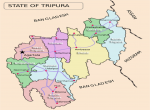
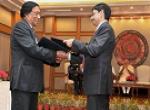
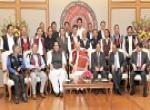
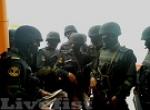
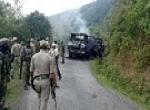
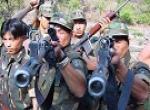
Post new comment